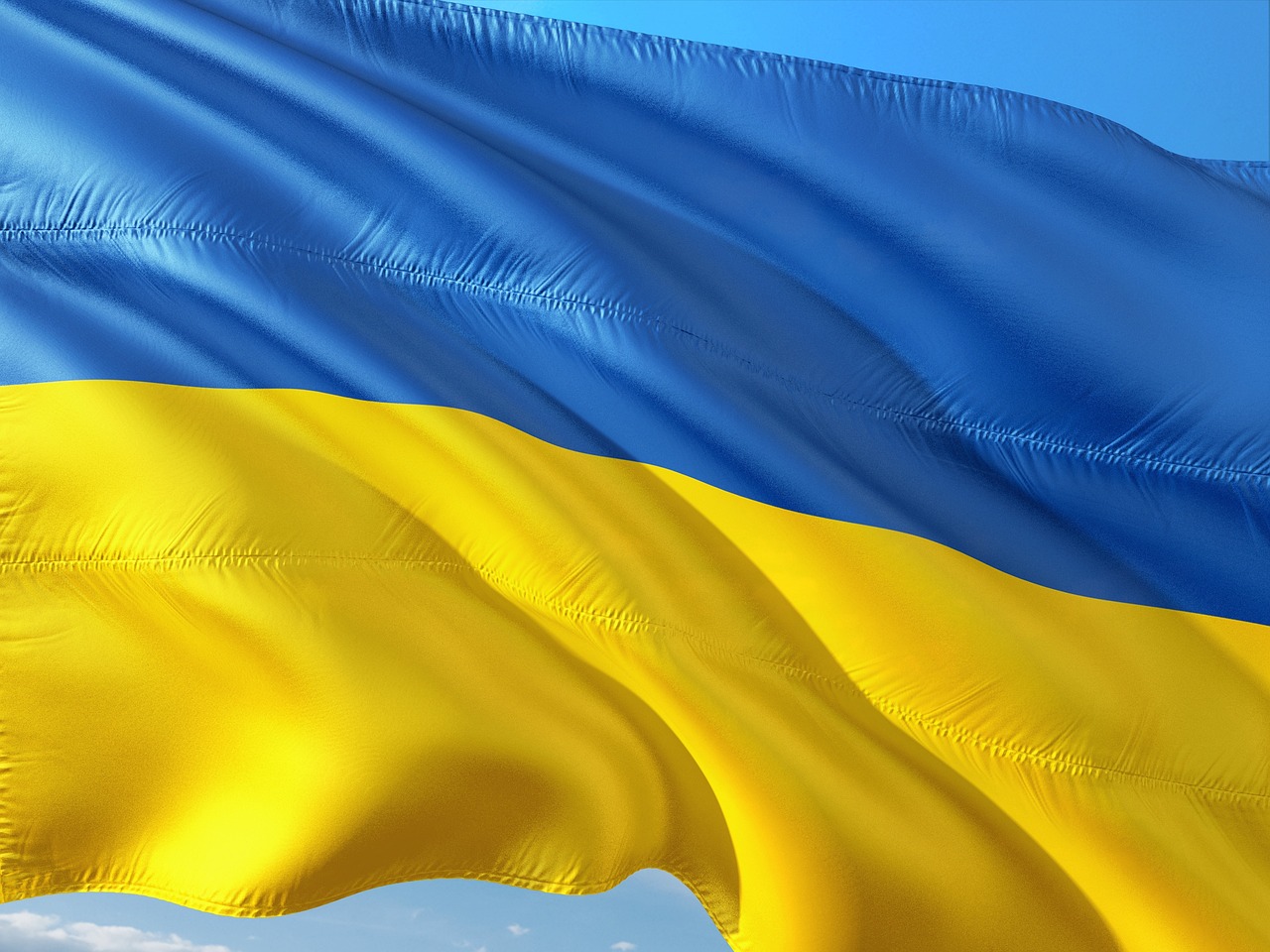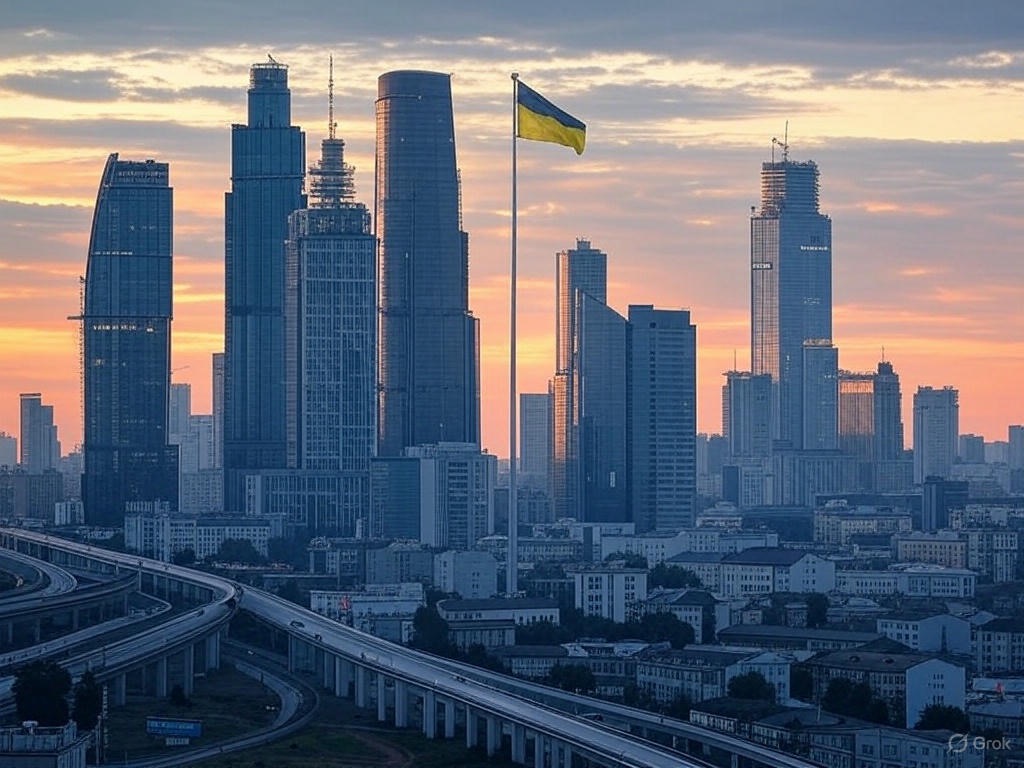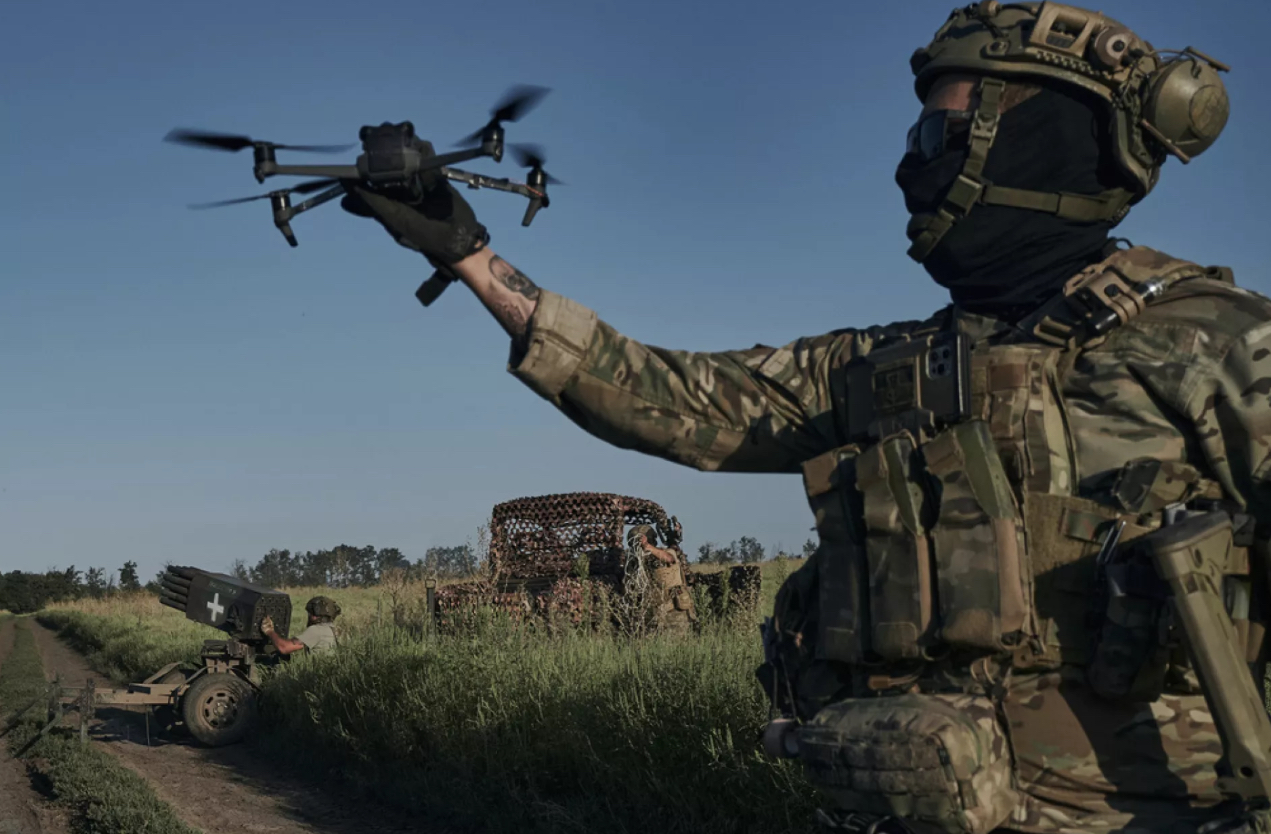As the war in Ukraine grinds into its fourth year, the very definition of resilience is being reforged in the crucible of conflict. The headlines of 2022, filled with rapid manoeuvres and grand strategies, have given way to a starker reality in the summer of 2025. This is no longer simply a war of territory, but a brutal, multi-domain contest of adaptation, innovation, and endurance. For Ukraine, survival has evolved from a historical virtue into its most critical strategic asset: a dynamic ability to out-think, out-innovate, and out-adapt a larger foe.
The battlefield itself has devolved into a hellscape of attrition reminiscent of a century ago, yet powered by 21st-century technology. The front lines in the east and south, where Russia now occupies roughly 20% of Ukraine, inch forward at a ghastly price. Since the start of 2024, Moscow has captured a mere 5,000 square kilometres–less than 1% of Ukraine–at a cost projected to surpass one million Russian casualties this summer. The Kremlin’s strategy is chillingly clear: to weaponise this bloodshed, believing it can absorb losses on a scale that will exhaust not just Ukraine’s army, but the political will of its Western backers.
This grinding war is being fought under the omnipresent gaze of drones. The airspace up to 20 kilometres from the front is a transparent “kill zone,” where any movement invites instant annihilation from above. In this lethal environment, Ukraine, facing a demographic deficit, has made a strategic leap, transforming itself into the world’s foremost laboratory for robotic warfare. In a landmark operation this past July, Ukrainian forces reportedly used only robotic systems to seize a Russian position in the Kharkiv region, capturing soldiers without a single Ukrainian casualty. It was a glimpse of the future Ukraine is racing to build, with stated plans to deploy as many as 15,000 ground robots by year’s end to resupply trenches, evacuate the wounded, and eventually, to fight.
Russia has adapted in turn. Its air force now relentlessly drops cheap but devastating UMPK glide bombs–Soviet-era munitions fitted with simple guidance kits–from ranges that keep its jets safe from many of Ukraine’s air defences. This has created an agonising dilemma for Kyiv. Protecting troops from these bombs requires moving precious air defence systems like the Patriot to the front, where they become prime targets. Holding them back to defend cities leaves soldiers horribly exposed. It’s a strategy of “interceptor attrition,” designed to bleed Ukraine’s finite supply of advanced missiles and punch holes in its defensive shield.
This technological arms race on the battlefield is mirrored by a complex geopolitical chess game. In Washington, the Trump administration pursues a dual-track policy, pressuring Kyiv toward a negotiated settlement while allowing new, innovative aid mechanisms to function. The most significant of these is the NATO Prioritised Ukraine Requirements List (PURL) initiative. In a deft strategic workaround, European allies are now funding Ukraine’s purchases directly from U.S. production lines. In early August 2025, nations like the Netherlands and Sweden committed over $1 billion through this channel, effectively “renting” America’s defence industrial base to bypass potential White House obstruction. It’s a transactional arrangement that keeps the weapons flowing but leaves Kyiv’s long-term planning hostage to the shifting winds of American politics.
In response to this uncertainty, Europe has experienced a strategic awakening. European nations provided nearly 60% of military aid in 2024 and are now using the EU accession process as their most powerful geopolitical tool. For Brussels, bringing Ukraine into the European fold is no longer just an economic project; it is a security imperative. By binding Ukraine to its laws and standards, the EU is providing a form of “security by integration,” making Ukraine’s pro-Western trajectory irreversible while NATO’s ultimate guarantee remains on the horizon. This Western recalibration is set against a consolidating counter-axis. Russia, Iran, and North Korea have deepened their alliance of autocracies, with Pyongyang supplying Moscow with vast quantities of artillery shells and ballistic missiles to sustain its war of attrition.
Economically, Ukraine’s survival is a story of two pillars: the stunning adaptability of its private sector and the lifeline of international financial aid that keeps the state solvent. With reconstruction costs soaring past $500 billion, the focus has shifted from public pledges to luring private capital. The war itself is forcing brutal but necessary economic transformations. Russia’s systematic destruction of the energy grid–wiping out nearly half of Ukraine’s pre-war generating capacit–is catalysing a leapfrog from a centralised Soviet system to a decentralised, resilient grid built on renewables and smaller, dispersed power sources. It is a transition born of existential necessity.
Likewise, in agriculture, the loss of preferential access to the EU market is forcing a pivot away from exporting raw commodities. The future now lies in developing a high-value processing industry–turning grain into pasta, sunflower seeds into bottled oil–for new markets in Asia and the Middle East. This transformation is being powered by a burgeoning AgriTech sector, where drone technology and AI honed on the battlefield are being repurposed to modernise Ukraine’s legendary farmlands.
At the heart of this national adaptation is a profound internal transformation. The “state in a smartphone” app, Diia, with over 22 million users, has become a pillar of digital sovereignty, ensuring the continuity of government and citizen services despite physical destruction. It is a symbol of a nation that is not just surviving but reinventing itself under fire.This resilience, however, comes at an unimaginable human cost. Over six million Ukrainians remain refugees, and it is estimated that up to half the population may need psychological support to cope with the collective trauma. Yet, the nation’s vibrant civil society provides a powerful bottom-up strength, complementing the state’s technological drive.
Looking ahead, several scenarios loom, from a protracted grinding war to a frozen conflict or, in the best case, a Russian reassessment driven by unsustainable costs. For Ukraine’s partners, the path forward requires a crucial mental shift: from providing just enough aid to prevent defeat, to making the strategic, long-term investments required for a Ukrainian victory. That victory is no longer defined just by lines on a map, but by the survival and success of a sovereign, innovative, and resilient Ukraine, firmly anchored in the West. For investors and policymakers alike, the opportunities lie in backing this forced evolution–in its new energy grid, its value-added agriculture, and its digital statecraft. This is not just about rebuilding a nation; it’s about investing in a new European growth story being forged in the fires of war.
Disclaimer: Important Legal and Regulatory Information
This report is for informational purposes only and should not be construed as financial, investment, legal, tax, or professional advice. The views expressed are purely analytical in nature and do not constitute financial guidance, investment recommendations, or a solicitation to buy, sell, or hold any financial instrument, including but not limited to commodities, securities, derivatives, or cryptocurrencies. No part of this publication should be relied upon for financial or investment decisions, and readers should consult a qualified financial advisor or regulated professional before making any decisions. Bretalon LTD is not authorized or regulated by the UK Financial Conduct Authority (FCA) or any other regulatory body and does not conduct activities requiring authorization under the Financial Services and Markets Act 2000 (FSMA), the FCA Handbook, or any equivalent legislation. We do not provide financial intermediation, investment services or portfolio management services. Any references to market conditions, asset performance, or financial trends are purely informational and nothing in this report should be interpreted as an offer, inducement, invitation, or recommendation to engage in any investment activity or transaction. Bretalon LTD and its affiliates accept no liability for any direct, indirect, incidental, consequential, or punitive damages arising from the use of, reliance on, or inability to use this report. No fiduciary duty, client-advisor relationship, or obligation is formed by accessing this publication, and the information herein is subject to change at any time without notice. External links and references included are for informational purposes only, and Bretalon LTD is not responsible for the content, accuracy, or availability of third-party sources. This report is the intellectual property of Bretalon LTD, and unauthorized reproduction, distribution, modification, resale, or commercial use is strictly prohibited. Limited personal, non-commercial use is permitted, but any unauthorized modifications or attributions are expressly forbidden. By accessing this report, you acknowledge and agree to these terms-if you do not accept them, you should disregard this publication in its entirety.



